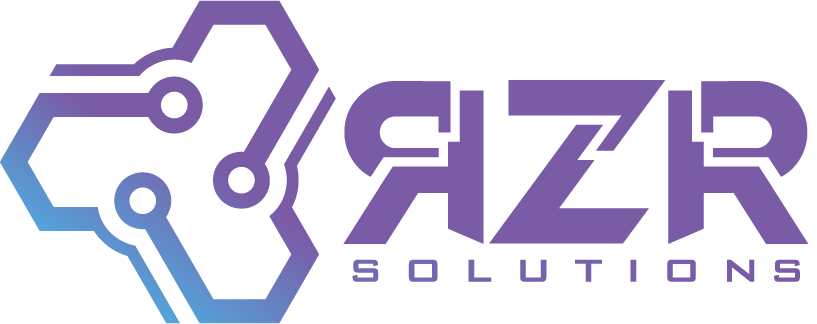Running a small business in North Texas comes with unique challenges, especially when it comes to managing IT needs. Are you struggling with outdated infrastructure, escalating costs, or inefficient communication tools? Perhaps you’re wrestling with cybersecurity concerns or trying to balance the demands of remote work with on-premise setups.
When considering cloud vs on premise North Texas businesses face complex decisions that can significantly impact their operations. The fast-paced business landscape in North Texas requires agility and adaptability. Yet many small businesses find themselves bogged down by technology that doesn’t align with their growth strategies.
That’s where RZR Solutions steps in. Our expert team is dedicated to alleviating these IT pain points by helping businesses navigate their options—be it cloud solutions or on-premise systems. We equip you with the technology and support necessary to streamline operations, enhance security, and drive success. Read on to discover which approach is best for your business and how RZR Solutions can partner with you on this journey.
Understanding Cloud Computing Basics
Cloud computing has rapidly transformed the way businesses operate. It provides flexibility, scalability, and cost efficiency. For North Texas companies evaluating cloud vs on premise North Texas solutions, grasping the fundamentals is essential for informed decisions about technological infrastructure.
At its essence, cloud computing refers to the delivery of computing services—including servers, storage, databases, networking, software, and analytics—over the internet or “the cloud.” By leveraging cloud-based infrastructure, businesses can avoid the limitations of traditional on-premise systems. This includes significant upfront hardware investment and ongoing maintenance costs.
According to a report by Gartner, public cloud services were projected to grow to $397.4 billion in 2022, showcasing a robust shift toward cloud-based solutions across sectors.
Scalability and Flexibility Benefits
One primary advantage of cloud computing is scalability. North Texas businesses often experience demand fluctuations. Cloud solutions allow companies to scale resources up or down without physical hardware adjustments. As a result, organizations can respond quickly to market changes and customer needs, which enhances competitiveness.
Many providers, such as RZR Solutions, offer customizable plans that adapt to unique business requirements. You pay only for what you use.
Cloud computing also enhances collaboration. With cloud-based applications, employees can access data and software from any location and share information seamlessly. This is vital in today’s remote and hybrid work environment used by many North Texas businesses.
A study by McKinsey found that 68% of companies expect to increase their digital technologies over the next few years, emphasizing the ongoing transition to cloud solutions.
Security and Cost Advantages
Security is another crucial aspect of cloud computing. It is a common misconception that on-premise systems are inherently more secure. Reputable cloud providers invest heavily in security measures, often surpassing the capabilities of most internal IT departments.
For example, RZR Solutions implements advanced security protocols—encryption, firewalls, and regular security audits—to safeguard your data. According to a survey from the Cloud Security Alliance, 73% of organizations believe that cloud providers offer better security than on-premise solutions.
Cost efficiency is also a major driver. With traditional on-premise infrastructures, businesses bear hardware procurement, maintenance, and upgrade costs. These strain budgets, especially for small to medium-sized enterprises. Cloud services often operate on a pay-as-you-go model, which minimizes the financial burden and helps allocate resources more effectively.
As you evaluate cloud computing for your North Texas business, consider your operational needs and growth trajectory. Factors such as size, industry regulations, and existing IT infrastructure are key. Engaging with professionals—like the experts at RZR Solutions—provides tailored recommendations based on your specific circumstances.

Total Cost of Ownership Comparison
When evaluating cloud vs on premise North Texas setups, one crucial factor is Total Cost of Ownership (TCO). TCO includes the initial outlay for hardware and software and the ongoing costs: maintenance, support, and operations. Understanding these dimensions helps you make an informed decision aligned with budget constraints and long-term goals.
One statistic indicates that businesses adopting a cloud system can reduce IT spending by up to 30% compared to on-premise. Savings come from minimized hardware purchases, reduced physical storage needs, and lower maintenance labor. For many North Texas companies, these efficiencies translate into significant savings.
Hidden Costs of On-Premise Systems
On-premise systems require substantial upfront capital investment. Costs include servers, storage, networking equipment, and software licenses. You also need physical space, power, and cooling. Ongoing expenses—IT staff salaries, hardware refreshes, and maintenance agreements—add up over time.
Scaling is another TCO element. Cloud services let businesses pay for the resources they use, making scaling simpler and often more economical. According to Gartner, organizations can scale infrastructure without the high costs tied to physical upgrades or additional staffing. This is helpful for North Texas businesses with seasonal demand swings.
Operational Efficiency and Compliance
Operational costs also favor the cloud for many SMBs. Reduced physical infrastructure management lowers day-to-day effort. Providers like RZR Solutions take on security, upgrades, and backups. Your team can focus on strategic work instead of routine maintenance.
Compliance and security costs matter, too. Cloud providers often include controls that meet industry standards and regulations. This can be more cost-effective than building the same measures on-premise. RZR Solutions offers compliance support so local businesses meet requirements without hefty overhead.

Security Considerations for Both Options
When deciding between cloud vs on premise North Texas solutions, security is paramount. Both options have strengths and challenges in safeguarding sensitive information and maintaining system integrity. Understanding these helps you choose what aligns with your business needs.
Cloud solutions often provide advanced, multi-layer security that is hard to match in-house. Major providers like AWS and Microsoft Azure invest in encryption, intrusion detection, and continuous monitoring. A McAfee survey found that 52% of businesses reported better security in the cloud than on-premise. For North Texas companies, partnering with RZR Solutions provides access to these capabilities and proper configuration.
Control vs. Cost in Security Management
On-premise solutions offer more direct control. This can help organizations with strict compliance requirements—such as healthcare or financial sectors. Physical control allows tailored security protocols that match specific regulatory needs.
However, control has a price. Maintaining on-premise security means continuous investment in updates, tooling, and skilled staff. Gartner reports that organizations managing on-premise solutions can spend on average 30% more on security than cloud counterparts, largely due to staffing and infrastructure overhead.
Backup and Recovery Strategies
Data backup and recovery are critical in both environments. Many cloud offerings include automated backups and quick restore options. RZR Solutions helps evaluate vendors and design redundancy to minimize downtime and data loss.
On-premise requires your team to design and maintain backup procedures. Gaps can appear if processes aren’t tested. A hybrid approach—critical data on-premise with cloud storage and backup—often provides a balanced middle ground.
Finally, ongoing employee training is essential. Human error remains a top cause of breaches. Security awareness training should be part of your plan regardless of platform.

Hybrid Solutions for Growing Businesses
As companies in North Texas grow, many choose cloud, keep on-premise, or adopt a hybrid model. The decision impacts efficiency, scalability, and cost-effectiveness. Understanding hybrid benefits helps you choose the best fit.
Hybrid solutions offer the flexibility of both approaches. Companies can keep sensitive data on-premise and leverage cloud for less critical workloads. According to Gartner, over 70% of enterprises will have at least one application in the cloud by 2024, reflecting this trend.
Scalability and Disaster Recovery Benefits
Hybrid environments scale as needs change. You avoid large hardware purchases that may sit idle during slower periods.
They also improve disaster recovery. Storing data on-premise and in the cloud helps you recover faster after incidents. RZR Solutions provides robust backup solutions that support hybrid environments and protect critical data.
Operational Efficiency and Security Balance
Hybrid can enhance efficiency. Run each workload where it performs and costs best. This matters for growing businesses that want to maximize resources without unnecessary expense.
Security concerns are addressed as well. A hybrid setup lets you add on-premise controls for sensitive data while still benefiting from cloud agility. RZR Solutions customizes protocols for hybrid environments so North Texas businesses can rely on both worlds.
Every company should assess unique needs and challenges before choosing hybrid. Successful deployments require intentional integration, management, and security. Engaging providers like RZR Solutions helps align the design with long-term objectives.

Making the Migration Decision
When deciding between cloud vs on premise North Texas businesses face a critical choice that affects operations, costs, and scalability. The process involves budget, requirements, and future growth plans. Understanding these factors helps you choose the best path.
Cost is a major aspect. While on-premise may look cheaper at first, ongoing maintenance, upgrades, and replacements add up. Market research suggests businesses can save up to 30% in infrastructure costs by migrating to cloud solutions. Savings come from less physical space and reduced staffing for routine upkeep.
Security and Scalability Factors
RZR Solutions is seeing increased demand for cloud migration in North Texas. Many businesses recognize savings and improved flexibility from cloud adoption, especially SMBs without large in-house teams.
Security is another key factor. On-premise feels secure because you control it. However, a 2022 Ponemon report found that 65% of organizations experienced a data breach. Many resulted from outdated on-premise systems lacking modern security features. Cloud providers invest heavily in security and undergo regular audits, offering protections many teams can’t match alone.
Scalability matters as well. On-premise can struggle to handle sudden growth. If a North Texas business experiences a surge in customers, hardware may not keep up, causing downtime and lost revenue. Cloud solutions allow resources to scale up or down as needed.
User Experience and Compliance Requirements
User experience is critical. Cloud-based tools often improve collaboration in hybrid work models. Employees can access work from anywhere. An Upwork survey reported that 23% of remote workers in Texas saw significant productivity gains from cloud-based tools. RZR Solutions integrates software to enhance teamwork.
Compliance should not be overlooked. Many North Texas industries face strict regulations. Cloud providers often offer certified services that make adherence easier than a pure on-premise setup.
The migration decision should include a thorough assessment of the current IT landscape and a clear transition plan. North Texas businesses benefit from working with knowledgeable partners like RZR Solutions to guide the process.
Conclusion
In summary, the decision between cloud vs on premise North Texas depends on budget, business needs, scalability, and security requirements. Cloud offers flexibility, access, and cost-effectiveness. On-premise provides greater control and can fit strict compliance or specialized needs.
Assess your unique situation and long-term goals to choose the right path. RZR Solutions is here to help North Texas businesses navigate these decisions and implement the ideal IT infrastructure for success.
References
Gartner Says 70% of Organizations Will Shift Their Focus From Big to Small and Wide Data By 2025
2024 Data Breach Report | Verizon
90+ Cloud Computing Statistics: A 2025 Market Snapshot
Need IT Solutions?
Call: 972-904-1559 •
Book Consultation

